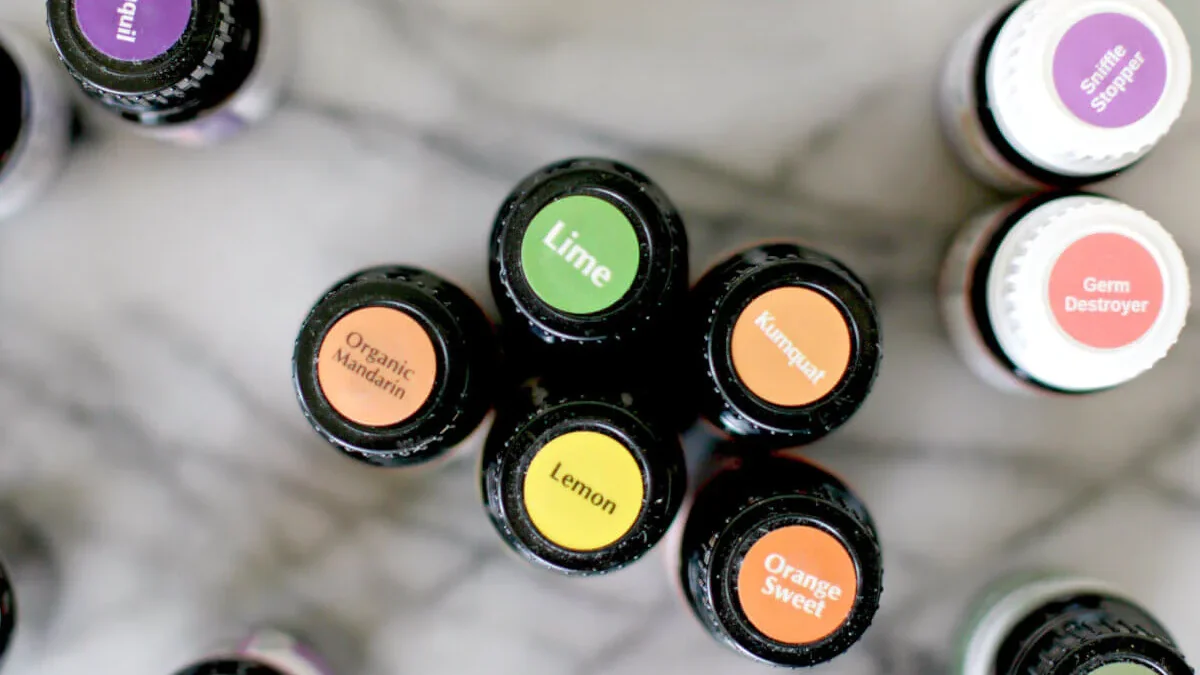
In the world of aromatherapy, essential oils are like tiny bottles of nature’s potent magic. Whether you’re a seasoned essential oil enthusiast or just starting your aromatic journey, one thing is clear: proper storage and organization are essential for preserving their therapeutic benefits and ensuring easy access. Here, you’ll learn some practical tips and tricks for storing and organizing your precious essential oils in a way that combines functionality with aesthetics.
Choosing the Right Storage Containers
The first step in the quest to keep your essential oils in top-notch condition is selecting suitable storage containers. Amber or cobalt blue glass bottles are the go-to choice for most enthusiasts. These dark-colored bottles help protect the oils from the harmful effects of light and UV rays, which can cause oils to deteriorate over time. It’s also crucial to opt for bottles with airtight seals, as exposure to air can lead to oxidation, diminishing the oils’ therapeutic properties. You can find various sizes, from tiny 5ml bottles to larger 30ml ones, to accommodate your collection.
Keep Them Cool and Dry
Essential oils are sensitive to temperature and humidity fluctuations. To preserve their purity and potency, it’s best to store them in a cool, dry place. A room temperature of around 68-72°F (20-22°C) is ideal. Avoid exposing your essential oils to extreme heat or cold, as this can cause chemical changes that may alter their aroma and therapeutic benefits. Humidity can also lead to the deterioration of your oils, so consider using a dehumidifier if you live in a particularly humid environment.
Organize Your Oils by Category
Once you’ve gathered your Young Living Essential Oils and secured the right containers, it’s time to organize them systematically. One effective method is to categorize your oils based on their therapeutic properties and intended uses. For example, you could group oils with calming effects, like lavender and chamomile, together in one section, and oils known for their invigorating properties, such as peppermint and citrus oils, in another. This organization makes it easy to find the perfect oil for your specific needs without sifting through your entire collection.
Labeling for Clarity
No matter how well you know your essential oils, it’s easy to confuse similar-looking bottles, especially if you have an extensive collection. That’s where labeling comes to the rescue. Invest in high-quality labels and clearly mark each bottle with the oil’s name, botanical name, date of purchase, and any special precautions or dilution guidelines. This small effort can save you from inadvertently using the wrong oil or wasting time searching for the right one, ensuring a hassle-free and safe aromatherapy experience.
Create a Display That Inspires
While functionality is paramount, there’s no reason why your essential oil storage can’t be visually appealing. Consider arranging your bottles on a dedicated shelf or display unit. You can find attractive wooden racks or acrylic stands designed specifically for essential oils. These displays not only make your oils easily accessible but also add an aesthetic element to your space. Plus, they serve as a daily reminder of the aromatic treasures you have at your disposal.
Safety First
It’s essential to keep safety in mind when storing and organizing your essential oils. Store them out of reach of children and pets, as some oils can be toxic if ingested. Additionally, ensure that your storage area is well-ventilated to prevent the accumulation of fumes, as concentrated essential oils can be overpowering in enclosed spaces. If you ever spill an essential oil, clean it up immediately, as some oils can damage surfaces or even be a slipping hazard.
Regularly Check and Rotate
To maintain the freshness and effectiveness of your essential oils, it’s wise to periodically check your collection for any signs of deterioration. Oils have a shelf life, and while some can last for several years, others may lose their potency more quickly. Inspect the bottles for changes in color, consistency, or odor. If you notice any unusual changes, it’s best to replace the oil. To avoid wastage, use a “first in, first out” approach, ensuring that older oils are used before newer additions to your collection.
Keeping Your Essential Oils Organized
Storing and organizing your essential oils is a crucial aspect of maintaining their therapeutic benefits and enhancing your overall aromatherapy experience. By choosing the right storage containers, keeping them in a cool, dry place, organizing them by category, labeling your bottles, and creating an inspiring display, you can ensure that your essential oils are both easily accessible and a visually pleasing part of your space. Remember to prioritize safety, regularly check your oils, and rotate them as needed to enjoy the full spectrum of aromatherapy bliss. With these simple yet effective strategies, you’ll be well on your way to harnessing the power of essential oils for your well-being and enjoyment.
Maria Mitchell
Related posts
Stay connected
Today's pick
- The Importance of Professional Handyman Services for Your HomeYour home is your sanctuary, a place of comfort and security, but maintaining it can be a daunting task. From routine maintenance to unexpected repairs, there’s always something that needs attention. While many homeowners might be tempted to tackle these jobs themselves, not all tasks... The post The Importance of Professional Handyman Services for Your […]

